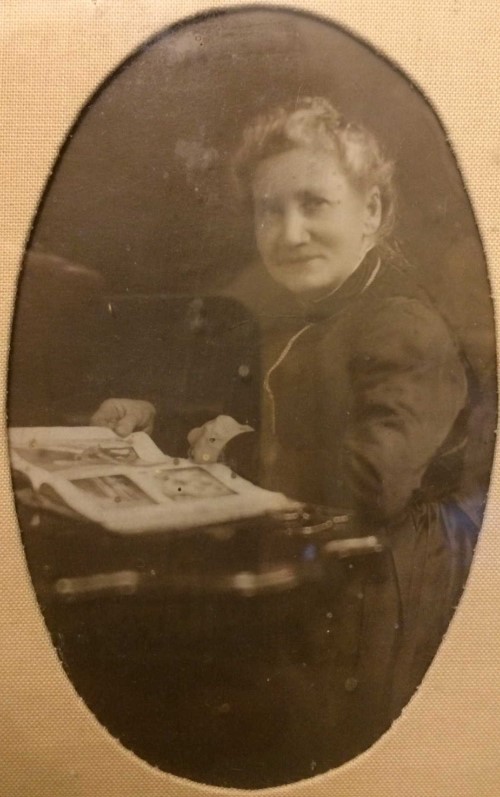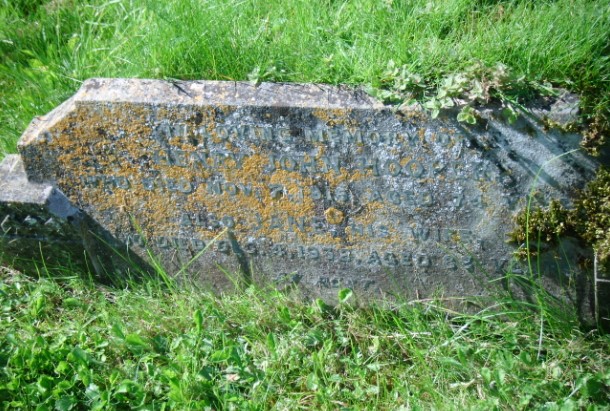Introduction
Henry John Hooper was a shoemaker at Hardington Moor from 1869 to about 1874. He moved to the parish from East Coker after marrying Letitia Cox of Hardington. Later, he returned to East Coker, where he ran a bootmaking business until his death in 1919. During his time at Hardington Moor, he worked with Charles Boucher, another shoemaker, who, along with his family, probably occupied part of Henry’s house.
Childhood at East Coker
Henry was born at East Coker in about 1845, the second of four children born to Thomas and Theresa Hooper, who were both sailcloth weavers.[1] The family lived in the hamlet of Coker Marsh, where Thomas and Theresa’s parents also resided.
When Henry was seven years old, his family suffered a tragic blow. At the beginning of December 1852, his father, Thomas, fell ill with typhoid fever and died on Christmas Day, at the age of just 31. He was buried in the parish churchyard two days later.[2] This marked the first of a series of early deaths that would profoundly impact Henry’s life.
Henry’s mother, Theresa, displayed remarkable strength, supporting the family for the next eight years through her own efforts. It was perhaps Theresa who encouraged her only brother, a shoemaker in North Coker, to accept Henry as an apprentice.[3]
The family’s circumstances changed dramatically when Henry was fifteen after the death of Theresa’s mother in March 1860. On 10 September 1860, Theresa married George Giles, a long-time neighbour and widower about fourteen years older than her. At around the same time, she took in her father, Samuel, who lived with them until his death in 1882.
When Henry was 23 years old, another tragedy struck the family when his sister, Elizabeth, died after leaving home. She had moved to Abingdon in Berkshire to work as a cook and contracted a brain disease.[4] It speaks volumes about the family’s love and mutual support that they arranged for her body to be returned to East Coker for burial.[5]
Life at Hardington
One year after his sister’s death, on 6 May 1869, Henry married Letitia Cox at Hardington church. She was the youngest child of Thomas Gill Cox and his wife Joanna. Following her mother’s death in 1865, her father remarried early in 1869, probably influencing Letitia’s decision to leave home.
The couple settled at Hardington Moor, occupying a cottage that belonged to Daniel Paul. Henry quickly established himself as a shoemaker, possibly continuing a business he had started at East Coker. By April 1871, he was working with Charles Boucher, a shoemaker who lived next door. Letitia contributed to their household income by working as a dressmaker.
Shortly after their marriage, Letitia became ill with tuberculosis. The illness progressed rapidly, and she died on 24 May 1871, aged only 26.[6] Henry’s mother, Theresa, helped nurse her during this time.
After Letitia’s death, Henry’s youngest sister, Mary, became Henry’s housekeeper for about nine months, returning from Berkshire, where she may have been in service like her sister, Elizabeth, before her. While there, she had become engaged to George Mayne, a domestic groom. Their marriage banns were called in Hardington church in January and February 1872, and they married there on 26 February 1872.[7]
On 28 September 1872, at East Coker, Henry married Jane Curtis, the daughter of Thomas Curtis, a shepherd.
On 24 October 1873, while living at Hardington, Henry advertised in the Western Gazette, seeking a shoemaker: “a steady man for strong general work.”[8]
Return to East Coker
By May 1875, Henry and his family had moved back to East Coker, where they lived at Coker Marsh close to Henry’s mother and stepfather. The move may have been made with their care in mind, as his stepfather was in his late 60s by then, and his grandfather, Samuel Young, was still alive.[9] Henry and Jane moved into a property called East Cottage, which remained their home for the rest of their lives.
This move to East Coker had implications for his business, as the village already had at least three shoemakers, including his uncle, who still had his business in North Coker.[10] After the move, Henry may have decided to specialise in men’s workwear, as he consistently called himself a bootmaker. Such a change may have meant less competition from factory-made items. By contrast, Charles Boucher, who remained at Hardington, continued to call himself a shoemaker.
Brother’s death
Henry’s brother, John, became a butcher in Yeovil. After the death of his first wife, Mary Ann, in 1871, he remarried in 1874, with Henry in attendance and acting as one of the witnesses. John enjoyed remarkable success with his business but, like their father, died young, passing away on 24 April 1883, aged 34. He left an estate valued at £1,684 4s 1d.[11] His death left Mary as Henry’s only sibling.[12]
Family life
By the summer of 1890, Henry and Jane had eight children, all living at home. To supplement the household income, Henry grew vegetables and, from 1885 until 1890, regularly won a prize for the high standard of his allotment.[13] His horticultural activities were also a leisure interest, as he also won prizes in the Sherborne Flower Show and the Chard Chrysanthemum and Fruity Society Show.[14]
Death
Henry died on 7 November 1919, aged 74.[15] Two years after his death, his widow remembered him in the local newspaper, the Western Gazette:
“In loving memory of my dear husband…
A father dear, a husband kind,
a beautiful memory left behind,
Never forgotten.”[16]
Jane’s later life
After Henry’s death, Jane continued living at Coker Marsh, sharing her home with her daughter, Alam Mary, who never married.
Jane died on 4 December 1932, aged 85.[17]
Children
Henry and Jane had three sons and five daughters. None of their children were baptised, which suggests that Henry and Jane were dissenters. It is noteworthy that their eldest son, Thomas Henry Hooper, married in 1903 at the Wesleyan Chapel in Yeovil.
Their eldest daughter, Elizabeth, was a pupil teacher at East Coker and later served as a teacher at Finchley and Cameley. Their second son, Adolphous Samuel, joined the King’s Own Hussars and later worked on aircraft at Yeovil, while Reginald John, their youngest son, became a torpedo fitter at Weymouth.
[1] Their first child, Henry, died in 1844, aged 6 months.
[2] Thomas Hooper’s death certificate: East Coker burial register.
[3] Theresa also had a brother, Robert, who died in infancy. While it is impossible to know for certain that Henry was trained by his uncle, it appears highly likely.
[4] Death certificate of Elizabeth Hooper.
[5] East Coker burial register.
[6] Monumental inscription in Hardington churchyard; death certificate. Henry’s brother, John, lost his first wife in August 1871.
[7] Hardington banns book.
[8] Western Gazette, 24 October 1873, p.4.
[9] George Giles died in about 1894, aged 86, and Theresa Giles died in 1903, aged 80.
[10] The other two shoemakers were Robert Dodge and Robert Stagg.
[11] National probate calendar.
[12] Mary Mayne died in the Reading area in about 1936, aged 85.
[13] Chard and Ilminster News, 3 October 1885, p.5; Western Gazette, 30 September 1887, p.6; Western Gazette, 14 September 1888, p.5; Western Gazette, 11 October 1889, p.7; Western Gazette, 10 October 1890, p.3.
[14] Western Gazette, 16 August 1895, p.6; 6 August 1897, p.5; Chard and Ilminster News, 14 November 1891, p.4.
[15] Memorial inscription at East Coker.
[16] Western Gazette, 18 November 1921, p.12.
[17] Memorial inscription at East Coker.





